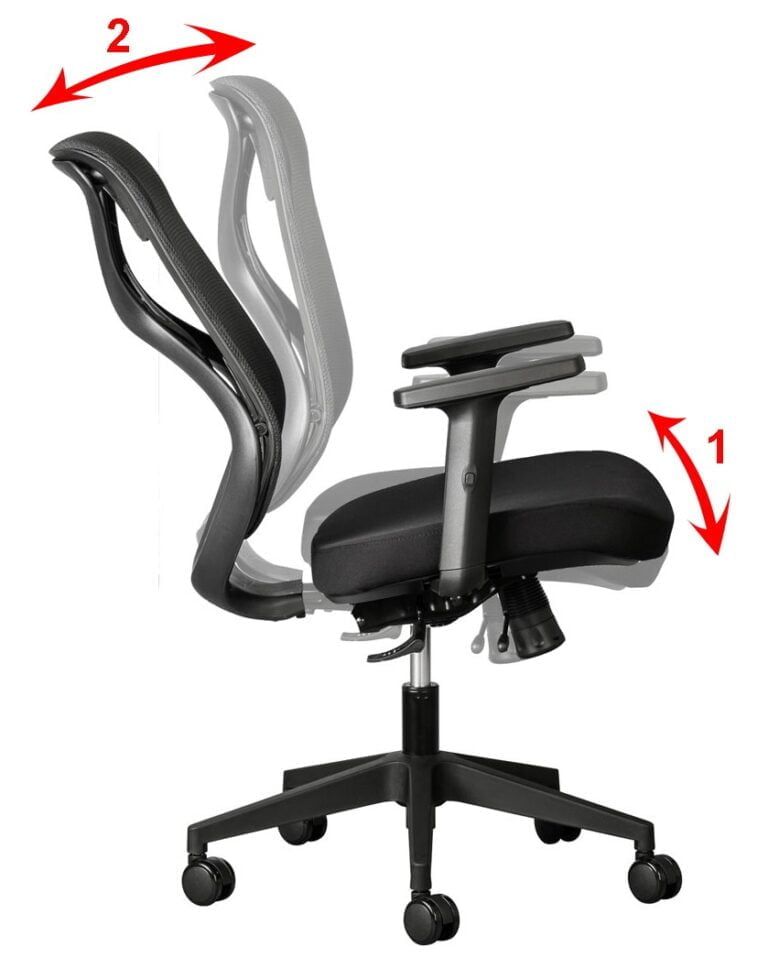Synchro Chair Mechanisms and Dynamic Sitting
Office chairs fitted with a synchronous or synchro mechanism, are a more recent development in chair ergonomics. These office chairs have a mechanical tilt that moves both the backrest and seat together in a fixed ratio in the same direction. Most of our ergonomic, heavy-duty and gaming office chairs have a synchro mechanism. What is the difference between office chair mechanisms?
All synchro mechanisms ensure that the movement of the backrest is greater than the movement of the seat. Typically these mechanisms have a 2:1 ratio that allows the backrest to move 2 degrees for every 1 degree of movement in the seat.

The 2:1 ratio ensures that when the backrest reclines (moves backwards), the angle between the seat and backrest will increase or 'open up'.
Conversely, when the backrest moves forwards to allow you to sit in a more upright position, the angle between the seat and backrest will decrease, or 'close'.
- Dynamic back support. In the free-float (unlocked) position, the chair is dynamic and the backrest provides continual back support by moving with you, i.e. the backrest moves forward with you when you are working at a desk, but moves backwards with you when you recline to talk on the phone.
- Tension Adjustment. A tension adjuster allows you to adjust the amount of tension required to suit your body weight.
A weight-sensitive synchro mechanism automatically adjusts to your body weight. - Locked or Free-Float. Our synchronous mechanisms will allow the backrest to be locked in various positions, or to free-float.
Synchro mechanisms improve Ergonomic Comfort through Dynamic Sitting
By allowing the backrest and seat to move together and relative to each other, the muscles in the lumbar region of the back are automatically stimulated. This increases the blood flow through these muscles which alleviates lower back pain commonly associated with long periods of static sitting. Dynamic Sitting has long been acknowledged as the global benchmark for ergonomic comfort. Breaking Back – What actually happens when you sit?


